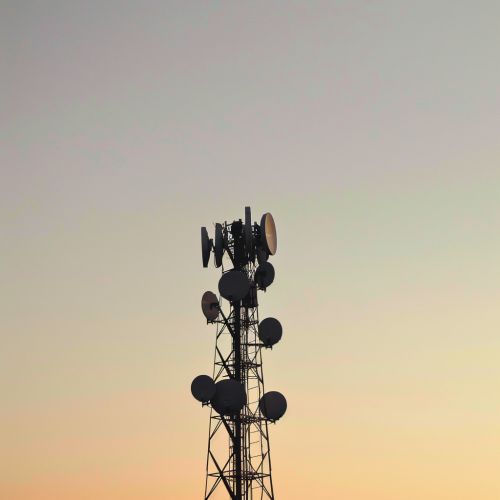Microwave Transmission
Overview
Microwave transmission refers to the technology of transmitting information or energy by the use of electromagnetic waves whose wavelengths are conveniently measured in small numbers of centimetre; these are called microwaves. This part of the radio spectrum ranges across frequencies of roughly 1.0 gigahertz (GHz) to 30 GHz. These correspond to wavelengths from 30 centimeters down to 1.0 cm. Learn more about Microwaves.
History
Microwave transmission technology has been part of long-distance telecommunication systems since the 1950s. Before the advent of fiber-optic technology, most long-distance telephone calls were carried via networks of microwave radio relay links run by carriers such as AT&T Long Lines. Learn more about Telecommunication.


Applications
Microwave transmission is used in point-to-point communication systems on the surface of the Earth, in satellite communications, and in deep space radio communications. Other parts of the microwave radio band are used for radars, radio navigation systems, sensor systems, and radio astronomy. Learn more about Satellite Communications.
Advantages and Disadvantages
Microwave transmission has several advantages such as a high data rate and capacity, smaller antenna size, and lower power requirements. However, it also has disadvantages such as line of sight propagation, high infrastructure cost, and susceptibility to environmental changes. Learn more about Radio Propagation.
Microwave Radio Relay
Microwave radio relay is a technology for transmitting digital and analog signals, such as long-distance telephone calls, television programs, and computer data, between two locations on a line of sight radio path. In microwave radio relay, microwaves are transmitted between the two locations with directional antennas, forming a fixed radio connection between the two points. Learn more about Digital Signals.
Satellite Communications
In satellite communications, microwave transmission is used because microwaves are able to pass through the atmosphere and into space with less attenuation compared to other types of radio waves. Satellite communication has two main components: the ground segment, which consists of fixed or mobile transmission, reception, and ancillary equipment, and the space segment, which primarily is the satellite itself. Learn more about Satellites.
Deep Space Radio Communications
Deep space radio communications use microwaves to communicate with spacecraft operating beyond Earth's orbit. This is possible because microwaves can penetrate the Earth's atmosphere, the ionosphere, and the solar wind, unlike shorter wavelength radio waves which are absorbed or reflected. Learn more about Spacecraft.
